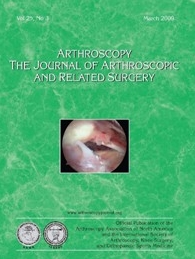
SHOULDER & ELBOW
Debridement, tenotomy, and tenodesis for SLBC lesions in cases of concomitant RC repair
Arthroscopy. 2016 Jun;32(6):958-67120 patients scheduled for arthroscopy due to rotator cuff tear and concomitant superior labrum-biceps complex lesion, were randomized to one of three arthroscopic management options for the LBLC lesion: simple debridement of degenerative tissue, tenotomy of the long head of the biceps tendon, or tenodesis of the long head of the biceps tendon. The purpose of this study was to compare patient-reported outcome measures (PROMs), shoulder range of motion (ROM), and complications between groups over 1 year follow-up. No significant differences in PROMs or shoulder ROM were observed between the three groups. Tenodesis and debridement groups demonstrated better recovery of shoulder supination strength compared to tenotomy. Observed "Popeye" deformity was significantly greater in the tenodesis and tenotomy groups compared to the debridement group.
Unlock the full ACE Report
You have access to {0} free articles per month.Click below to unlock and view this {1}
Unlock NowCritical appraisals of the latest, high-impact randomized controlled trials and systematic reviews in orthopaedics
Access to OrthoEvidence podcast content, including collaborations with the Journal of Bone and Joint Surgery, interviews with internationally recognized surgeons, and roundtable discussions on orthopaedic news and topics
Subscription to The Pulse, a twice-weekly evidence-based newsletter designed to help you make better clinical decisions
Exclusive access to original content articles, including in-house systematic reviews, and articles on health research methods and hot orthopaedic topics
Or upgrade today and gain access to all OrthoEvidence content for just $1.99 per week.
Already have an account? Log in


Subscribe to "The Pulse"
Evidence-Based Orthopaedics direct to your inbox.
{0} of {1} free articles
Become an OrthoEvidence Premium Member. Expand your perspective with high-quality evidence.
Upgrade Now












































































